Ever tried organizing a party, collecting contact info, or signing up volunteers and found yourself drowning in email threads or paper lists? Whether it’s a school RSVP, team T-shirt sign-up, or guest list for a birthday bash, managing responses without structure quickly becomes messy. Enter Google Forms—a free, intuitive tool that handles everything from data collection to event planning. But if you’re new to the process, you might be wondering: Do I need a Google Forms login? And how exactly does Google Forms work?
This post covers exactly how Google Forms Login Google Forms functions, how to use it efficiently, and how to create, manage, and share forms seamlessly—complete with real-world examples and practical tips.
Understanding Google Forms Login Google Forms
Before creating or managing a form, it’s essential to understand how Google Forms Login Google Forms plays a role. Google Forms is tightly integrated with Google Workspace (formerly G Suite), meaning it runs best when you’re logged into a Google account.
Do You Need to Log In?
-
Creating a Form: Yes. To create, edit, or view responses in a Google Form, you must log into your Google account.
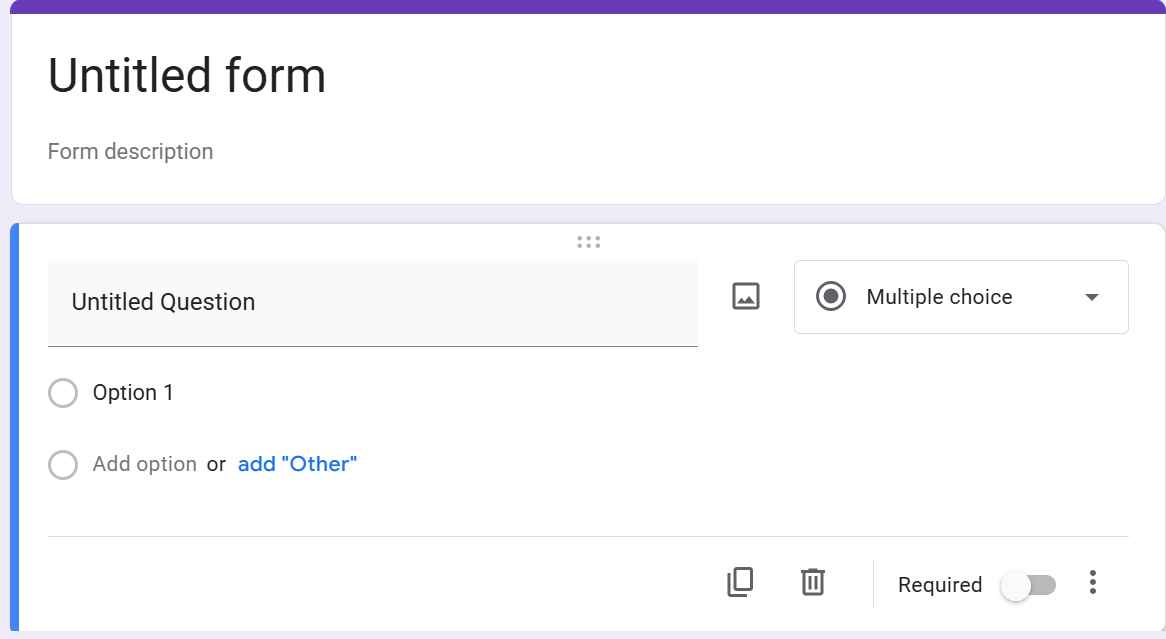
-
Filling Out a Form: No, unless the form owner has restricted access to only those within a specific organization or domain.
Once you’re logged in at https://docs.google.com/forms/u/0/, you’ll see a dashboard with templates and recently accessed forms. Here’s a quick look at what you might see:
-
Blank Form
-
Contact Information
-
T-Shirt Sign Up
-
RSVP
-
Party Invite
Each form you create or open becomes accessible from this hub.
Starting with Templates: Fast and Functional
Google Forms includes several templates to save time. Here are a few examples you can access from your dashboard:
-
Contact Information
Example: Contact Info Form
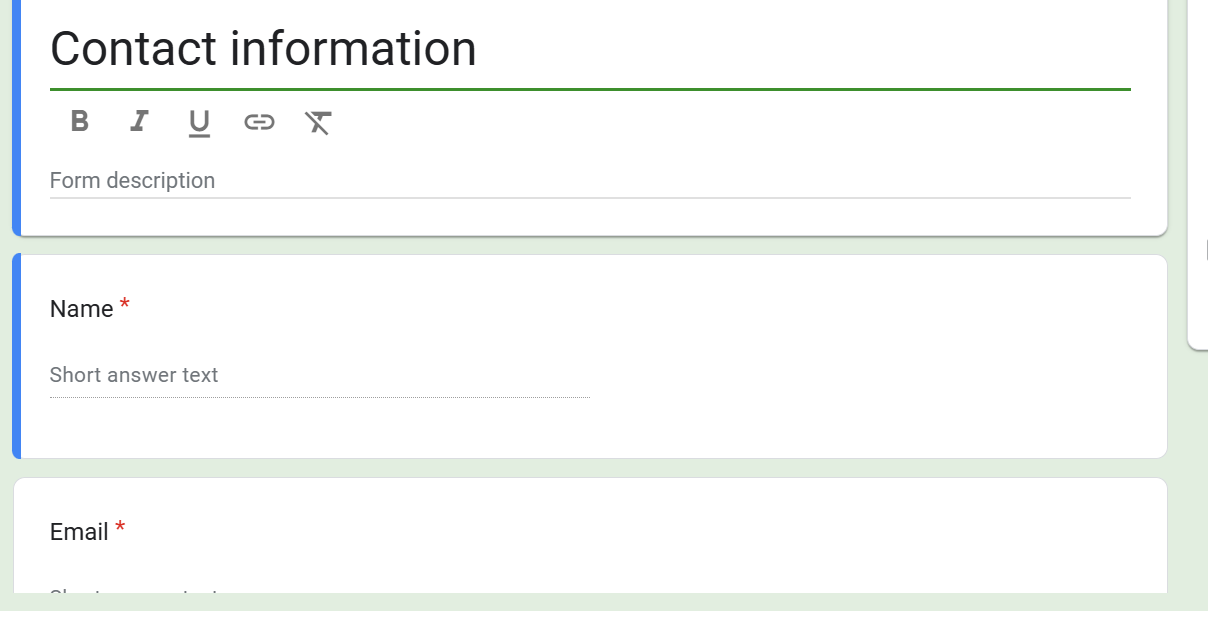
-
Fields:-
Name
-
Email
-
Address
-
Phone number
-
Comments
-
-
T-Shirt Sign Up
Example: T-Shirt Form
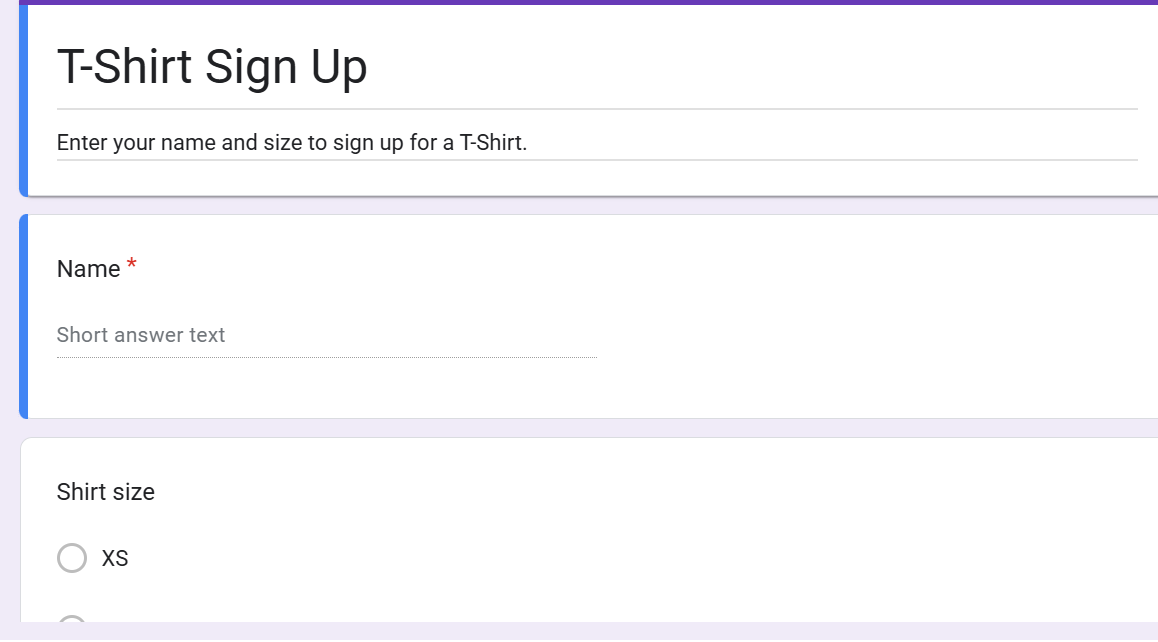
-
Collects:-
Name
-
Shirt size (XS to XL)
-
Comments
-
-
RSVP Form
Example: Event RSVP
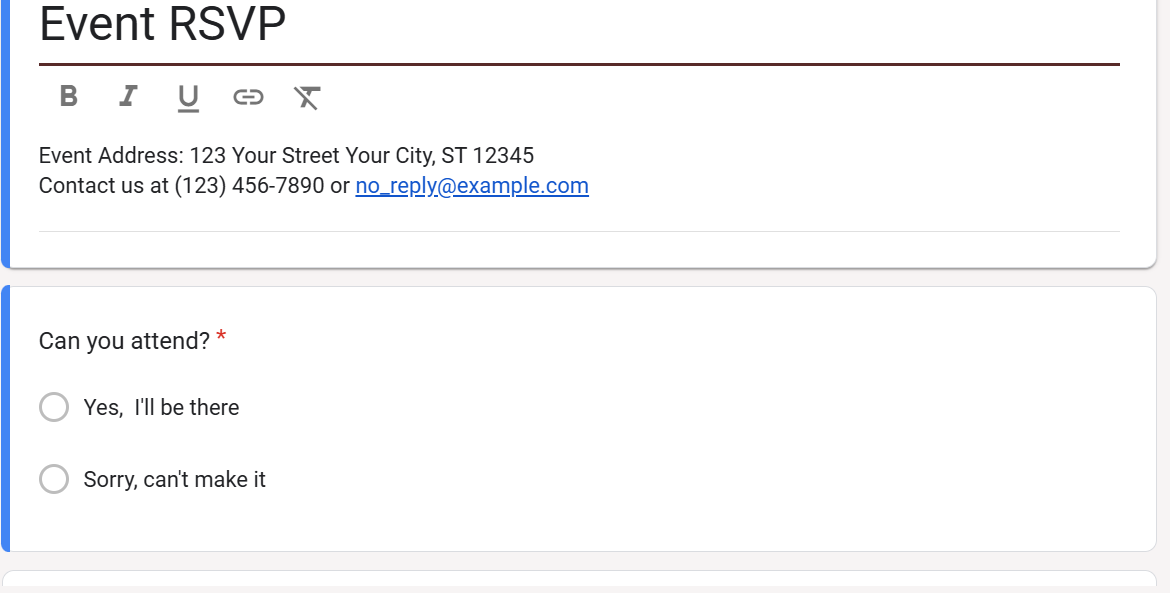
-
Features:-
Attendance status
-
Names of attendees
-
Source of information (Website, Friend, etc.)
-
Event contact: no_reply@example.com
-
-
Party Invite
Example: Party Invite
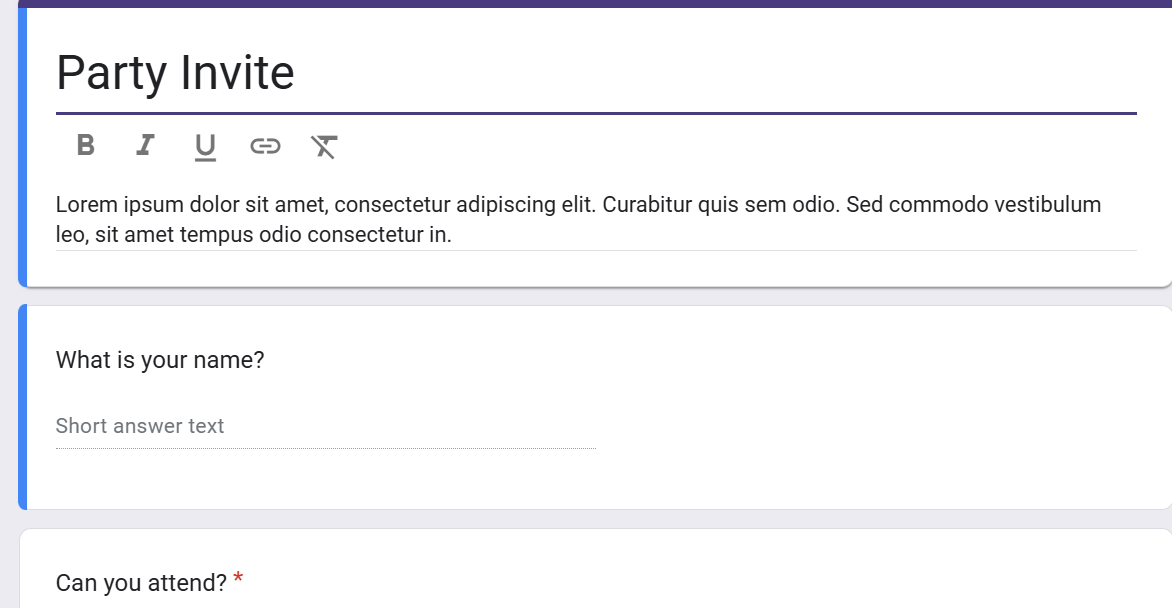
-
Includes: -
Guest name
-
-
Attendance
-
Dish you’ll bring
-
Dietary restrictions
-
These templates help you get up and running in minutes.
Key Features That Make Google Forms Effective
Here’s why millions rely on Google Forms:
1. Real-Time Response Collection
Responses are automatically stored in the form itself or linked to a Google Sheet for advanced analysis. No manual input needed.
2. Built-In Collaboration
Multiple users can edit a form simultaneously. This is perfect for teams planning an event or project.
3. Customization
Add logic to questions (e.g., only show certain questions based on earlier answers), use dropdowns, checkboxes, file uploads, and more.
4. Secure Sharing Options
You can:
-
Make forms public
-
Limit to one response per user
-
Restrict to your organization only
Managing Google Forms: Tips for Efficiency
Use the Settings Panel
Found in the upper right of each form, settings help you:
-
Limit responses to one per person
-
Shuffle questions
-
Show a progress bar
-
Allow respondents to edit responses after submission
Organize Your Forms
Your dashboard shows all recent forms, so naming them clearly (e.g., “RSVP – May 5th BBQ”) helps keep things organized.
Use Conditional Logic
Using “Go to section based on answer” lets you create dynamic forms that adapt based on how someone answers.
Analyze Results Easily
View results in charts from the “Responses” tab or export them to Google Sheets with one click.
Google Forms Login Google Forms in Action
Let’s say you’re planning a company picnic. You need to collect attendance, meal preferences, and T-shirt sizes. You log in, click “Start a New Form”, and choose or build your form.
Within minutes, you’ve added fields for:
-
Name
-
Email
-
Attendance confirmation
-
Food preference
-
T-shirt size
You send the link via email, and everyone’s responses show up in one neat place. You can even filter responses to see how many large shirts to order.
Common Pitfalls and How to Avoid Them
| Mistake | How to Fix |
|---|---|
| Forgetting to require email | Turn on “Collect email addresses” in settings |
| Not logging in | Use your Google account before creating or editing |
| Sharing edit link by mistake | Always click “Send” > “Link” > and ensure it’s view-only |
| No form title or unclear questions | Always preview your form and test before sharing |
Actionable Tips to Master Google Forms
-
Use templates when in a rush.
-
Preview your form before sending to catch formatting issues.
-
Link to Sheets for deeper data analysis.
-
Add images or videos for product demos, event flyers, or directions.
-
Test form logic (like skip patterns) before deploying.
-
Use short, specific labels for clarity.
Conclusion: Why Google Forms Just Works
From simple sign-up sheets to complex surveys, Google Forms Login Google Forms makes data collection painless. Its seamless integration with the Google ecosystem and ease of use means you can spend less time chasing responses and more time using the data.
Next time you need to gather information—be it for a club event, business registration, or family gathering—Google Forms has your back.


